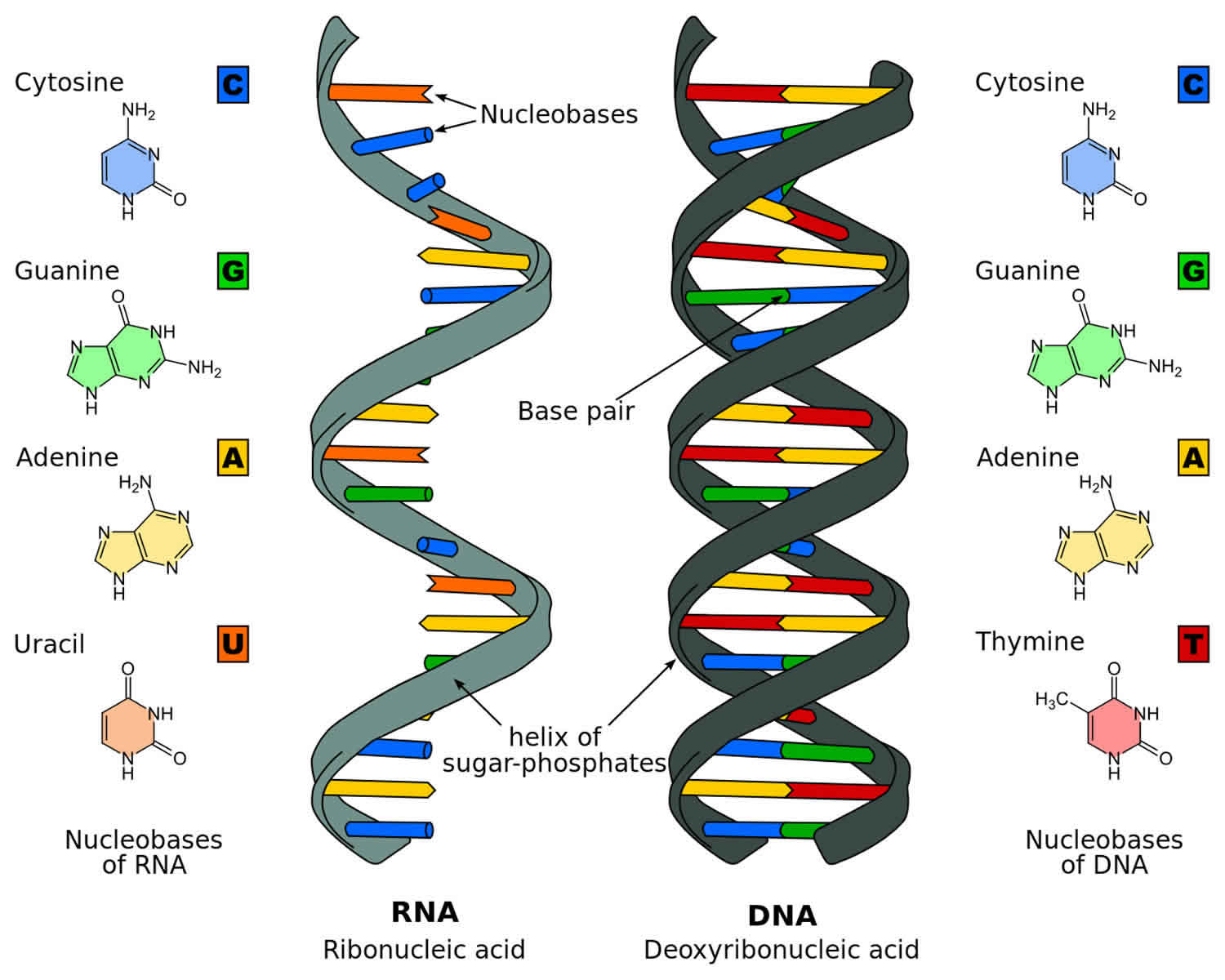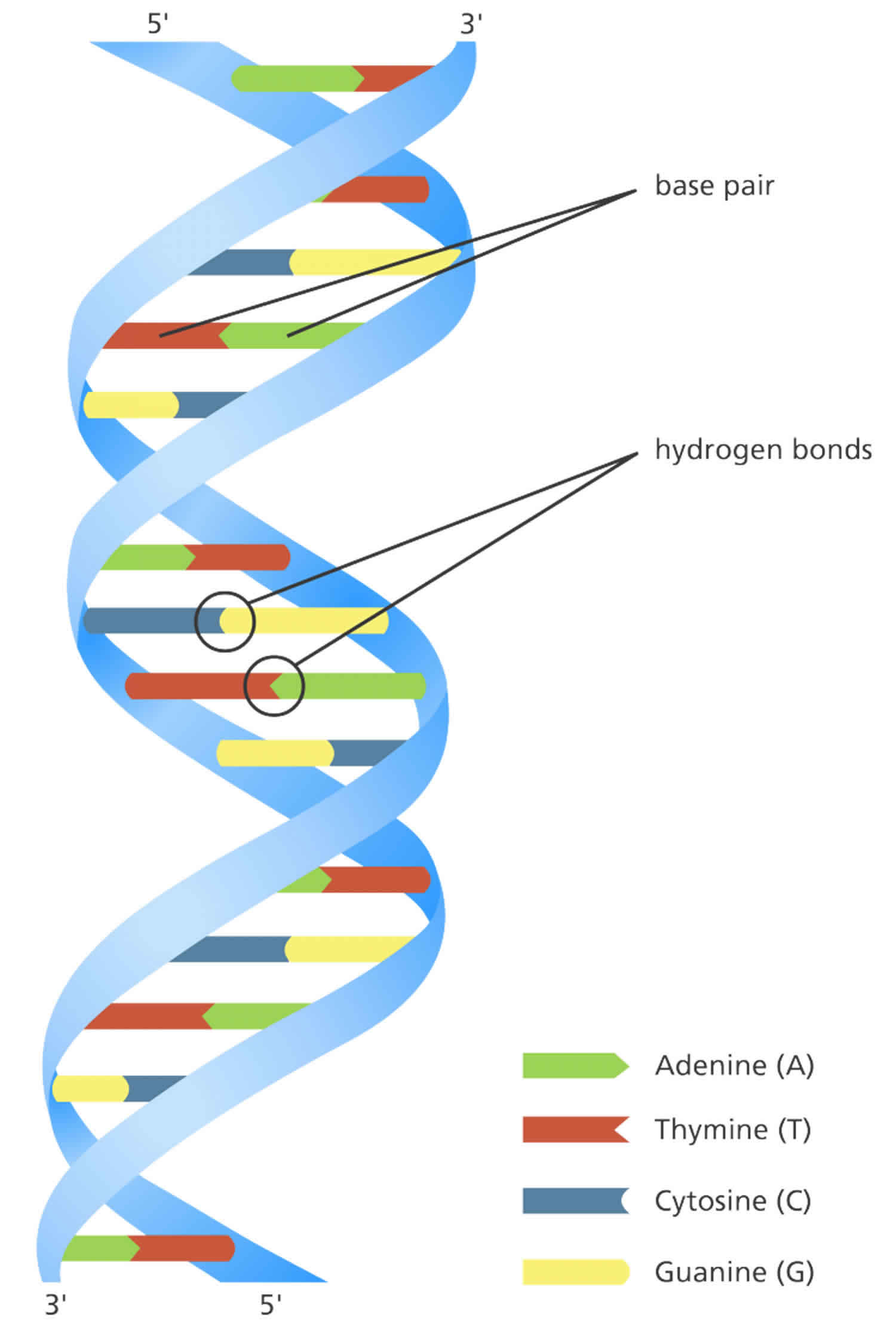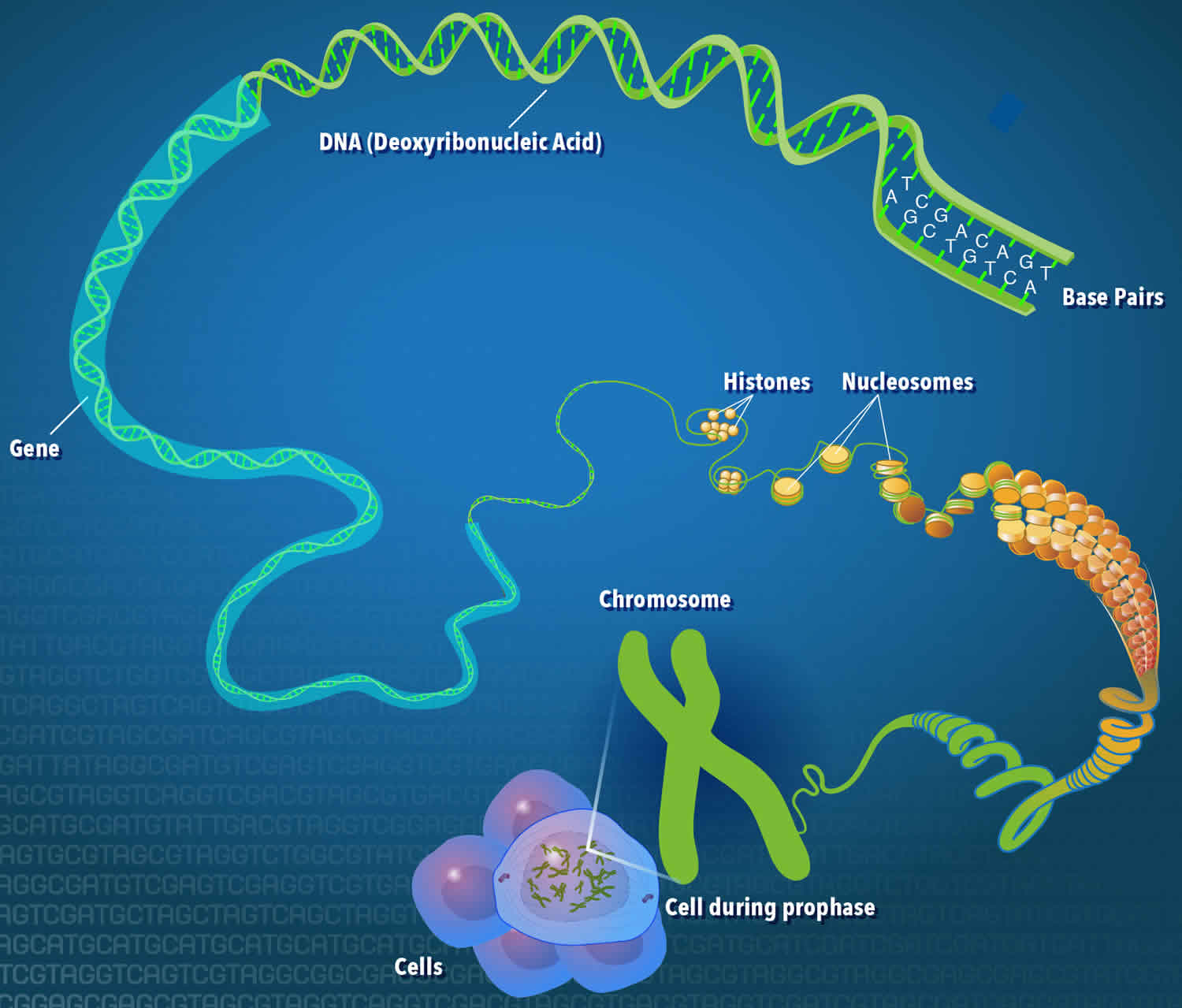What is deoxyribonucleic acid
Deoxyribonucleic acid is short for DNA, is the hereditary material in humans and almost all other organisms. Nearly every cell in a person’s body has the same DNA. Deoxyribonucleic acid (DNA) is a long two-stranded molecule that contains your unique genetic code. Like a recipe book deoxyribonucleic acid (DNA) holds the instructions for making all the proteins in your body. Most deoxyribonucleic acid (DNA) is located in the cell nucleus (where it is called nuclear DNA), but a small amount of DNA can also be found in the mitochondria (where it is called mitochondrial DNA or mtDNA). Mitochondria are structures within cells that convert the energy from food into a form that cells can use.
Deoxyribonucleic acid (DNA) contains four basic building blocks or ‘bases’: Adenine (A), Cytosine (C), Guanine (G) and Thymine (T).
The information in deoxyribonucleic acid (DNA) is stored as a code made up of four chemical bases: adenine (A), guanine (G), cytosine (C), and thymine (T). The bases on one strand of the deoxyribonucleic acid (DNA) molecule pair together with complementary bases on the opposite strand of DNA to form the ‘rungs’ of the DNA ‘ladder’. Deoxyribonucleic acid (DNA) bases always pair together in the same way, Adenine (A) with Thymine (T) and Cytosine (C) with Guanine (G) , to form units called base pairs. Each base pair is joined together by hydrogen bonds. Each base is also attached to a sugar molecule and a phosphate molecule. Together, a base, sugar, and phosphate are called a nucleotide. Nucleotides are arranged in two long strands that form a spiral called a double helix (see Figure 1). The structure of the double helix is somewhat like a ladder, with the base pairs forming the ladder’s rungs and the sugar and phosphate molecules forming the vertical sidepieces of the ladder.
Each strand of deoxyribonucleic acid (DNA) has a beginning and an end, called 5’ (five prime) and 3’ (three prime) respectively. The two strands run in the opposite direction (antiparallel) to each other so that one runs 5’ to 3’ and one runs 3’ to 5’, they are called the sense strand and the antisense strand, respectively.
The strands are separated during DNA replication.
An organism’s complete set of deoxyribonucleic acid (DNA) is called its genome. Virtually every single cell in the body contains a complete copy of the approximately 3 billion DNA base pairs, or letters, that make up the human genome.
Human genome consists of about 3.2 billion bases, and more than 99 percent of those bases are the same in all people. The order, or sequence, of these bases determines the information available for building and maintaining an organism, similar to the way in which letters of the alphabet appear in a certain order to form words and sentences.
An important property of deoxyribonucleic acid (DNA) is that it can replicate, or make copies of itself. Each strand of deoxyribonucleic acid (DNA) in the double helix can serve as a pattern for duplicating the sequence of bases. This is critical when cells divide because each new cell needs to have an exact copy of the DNA present in the old cell.
With its four-letter language (A, T, C and G), deoxyribonucleic acid (DNA) contains the information needed to build the entire human body. A gene traditionally refers to the unit of DNA that carries the instructions for making a specific protein or set of proteins. Each of the estimated 20,000 to 25,000 genes in the human genome codes for an average of three proteins.
Located on 23 pairs of chromosomes packed into the nucleus of a human cell, genes direct the production of proteins with the assistance of enzymes and messenger molecules. Specifically, an enzyme copies the information in a gene’s deoxyribonucleic acid (DNA) into a molecule called messenger ribonucleic acid (mRNA). The mRNA travels out of the nucleus and into the cell’s cytoplasm, where the mRNA is read by a tiny molecular machine called a ribosome, and the information is used to link together small molecules called amino acids in the right order to form a specific protein.
Proteins make up body structures like organs and tissue, as well as control chemical reactions and carry signals between cells. If a cell’s deoxyribonucleic acid (DNA) is mutated, an abnormal protein may be produced, which can disrupt the body’s usual processes and lead to a disease such as cancer.
Figure 1. Deoxyribonucleic acid structure (DNA) – this double helix structure was first discovered by Francis Crick and James Watson with the help of Rosalind Franklin and Maurice Wilkins.







